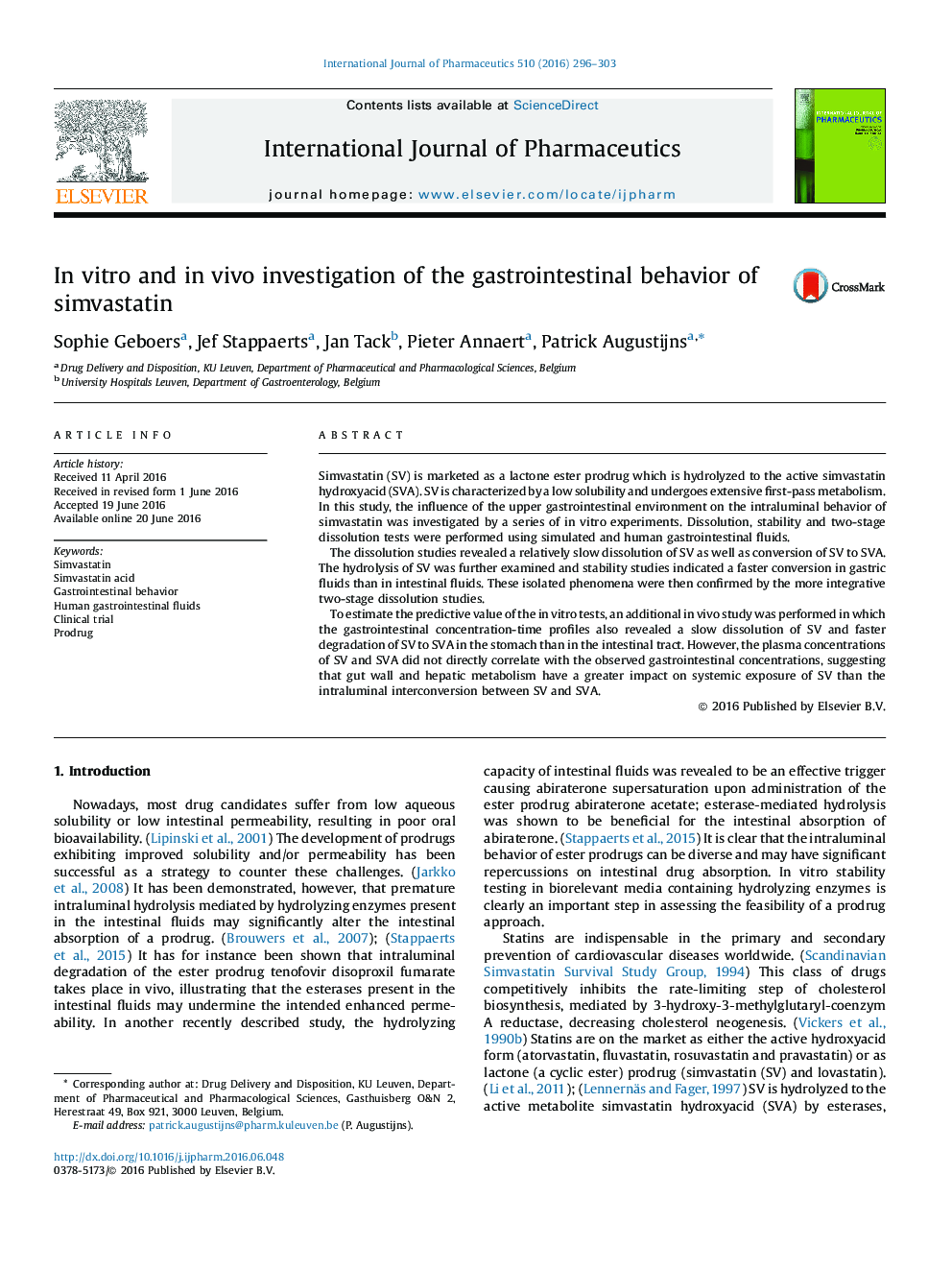| Article ID | Journal | Published Year | Pages | File Type |
|---|---|---|---|---|
| 2500826 | International Journal of Pharmaceutics | 2016 | 8 Pages |
Simvastatin (SV) is marketed as a lactone ester prodrug which is hydrolyzed to the active simvastatin hydroxyacid (SVA). SV is characterized by a low solubility and undergoes extensive first-pass metabolism. In this study, the influence of the upper gastrointestinal environment on the intraluminal behavior of simvastatin was investigated by a series of in vitro experiments. Dissolution, stability and two-stage dissolution tests were performed using simulated and human gastrointestinal fluids.The dissolution studies revealed a relatively slow dissolution of SV as well as conversion of SV to SVA. The hydrolysis of SV was further examined and stability studies indicated a faster conversion in gastric fluids than in intestinal fluids. These isolated phenomena were then confirmed by the more integrative two-stage dissolution studies.To estimate the predictive value of the in vitro tests, an additional in vivo study was performed in which the gastrointestinal concentration-time profiles also revealed a slow dissolution of SV and faster degradation of SV to SVA in the stomach than in the intestinal tract. However, the plasma concentrations of SV and SVA did not directly correlate with the observed gastrointestinal concentrations, suggesting that gut wall and hepatic metabolism have a greater impact on systemic exposure of SV than the intraluminal interconversion between SV and SVA.
Graphical abstractFigure optionsDownload full-size imageDownload high-quality image (161 K)Download as PowerPoint slide
